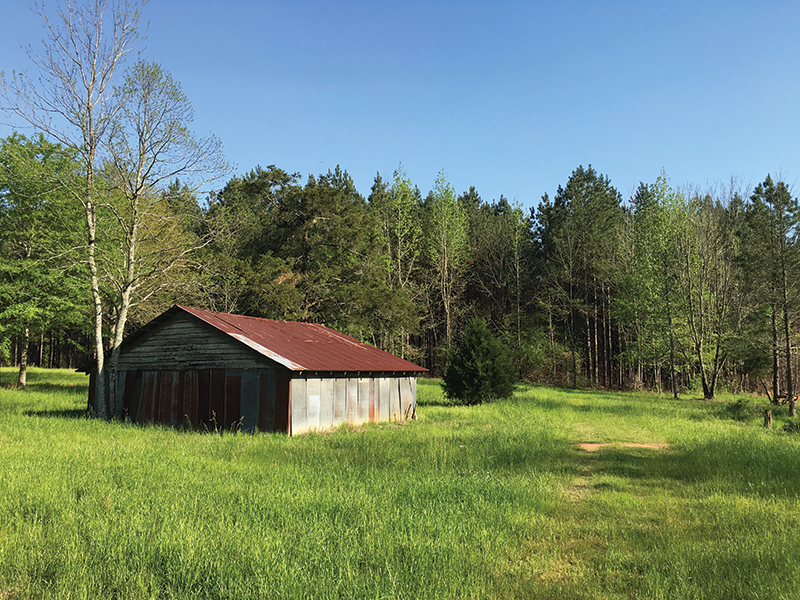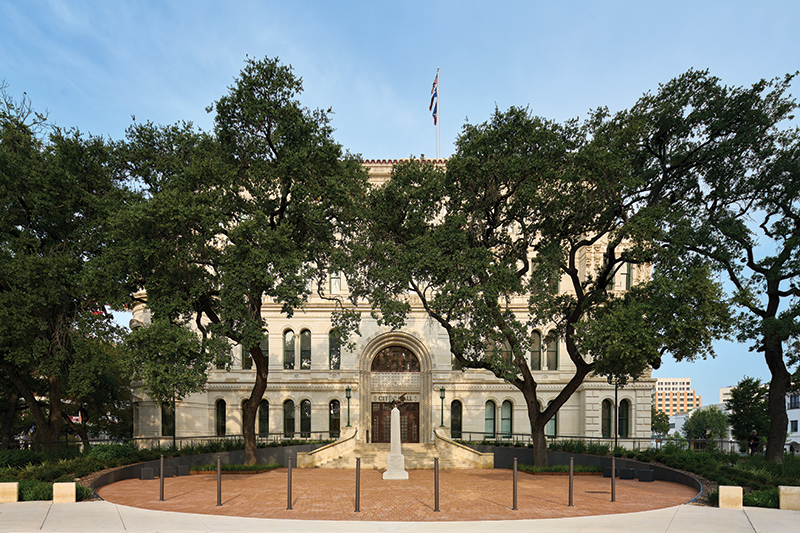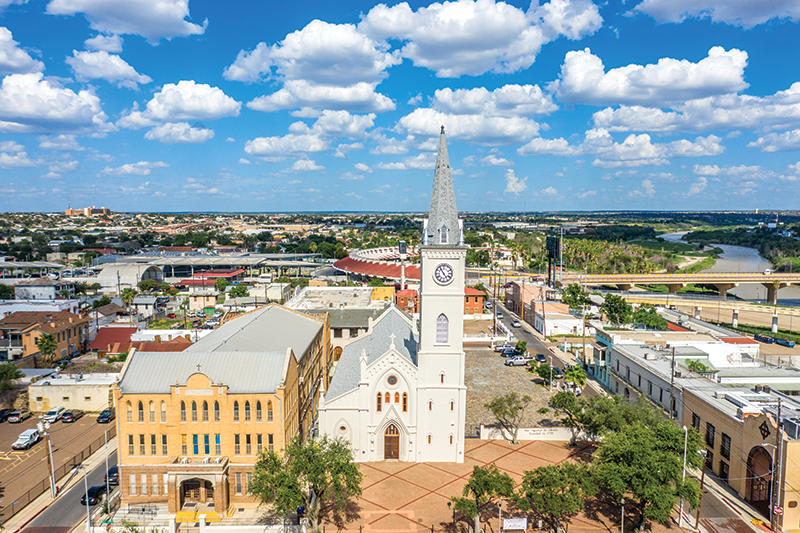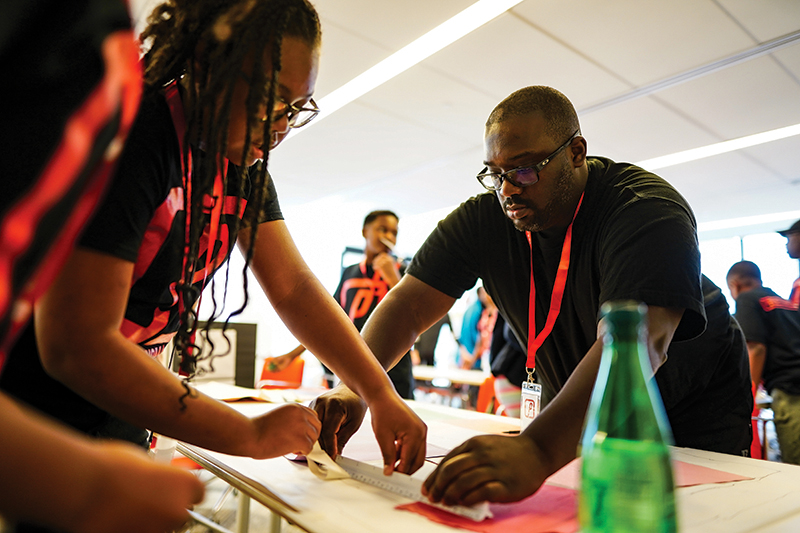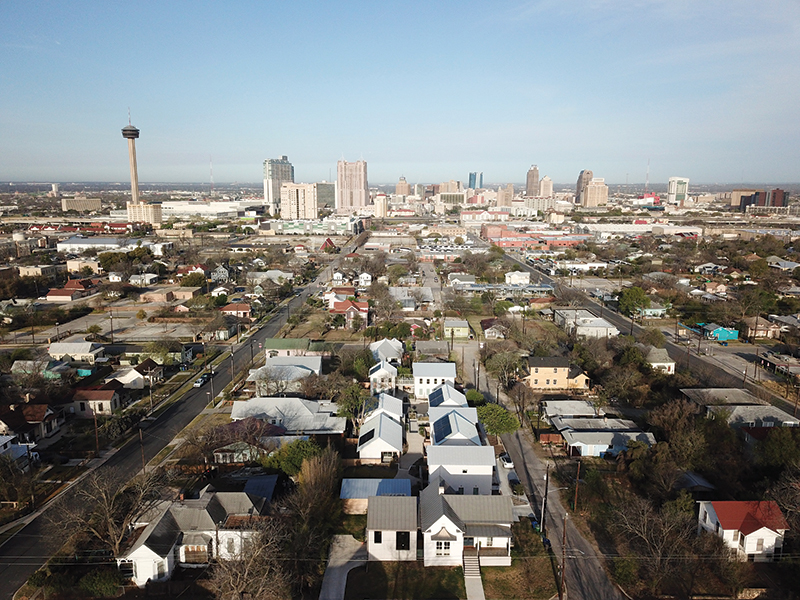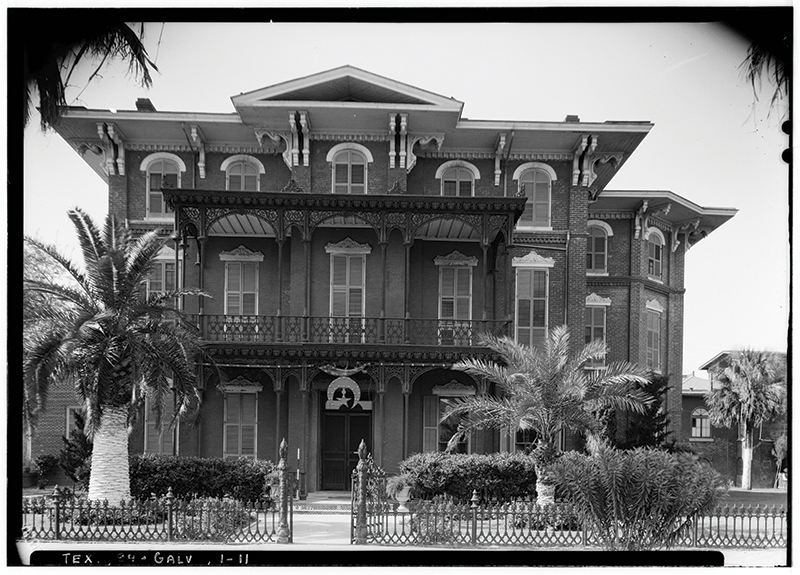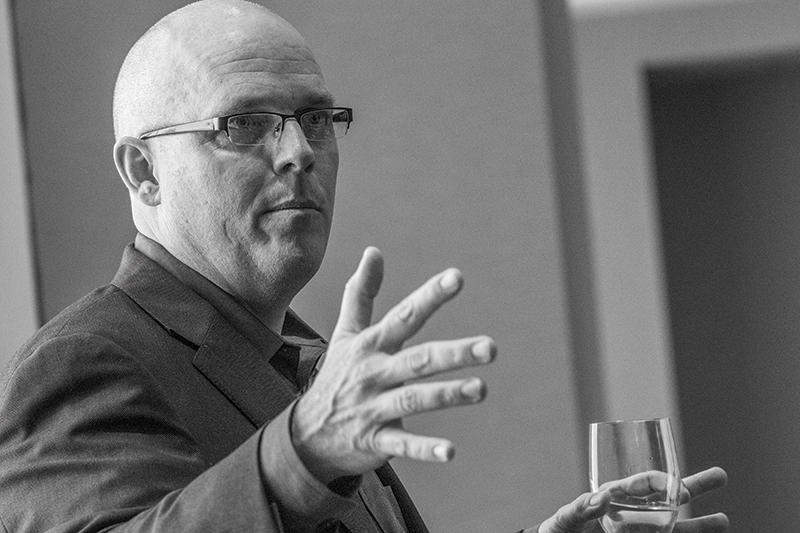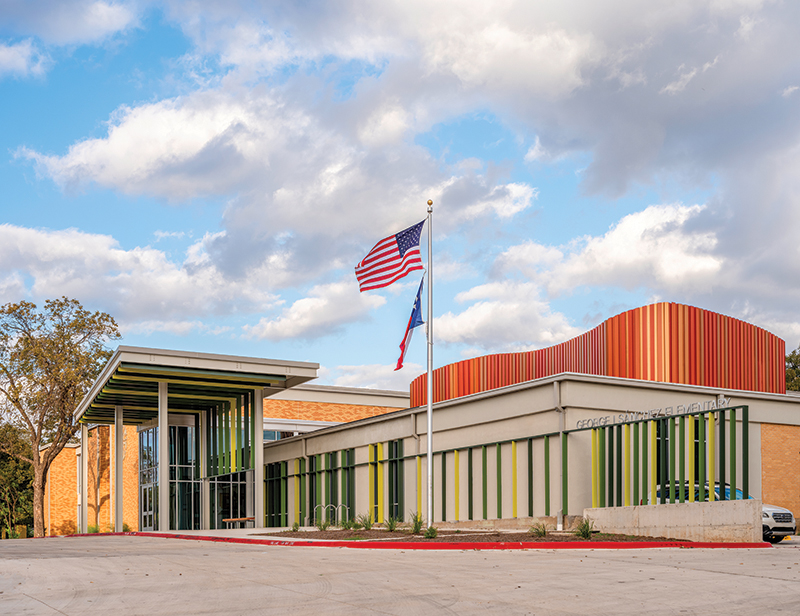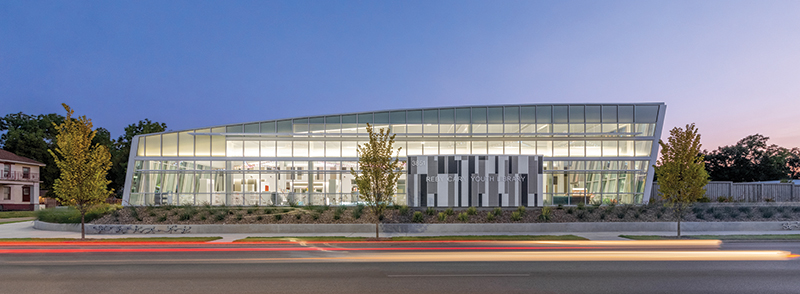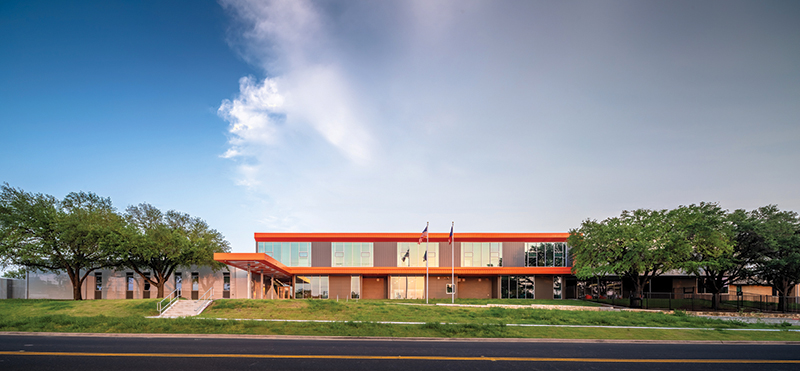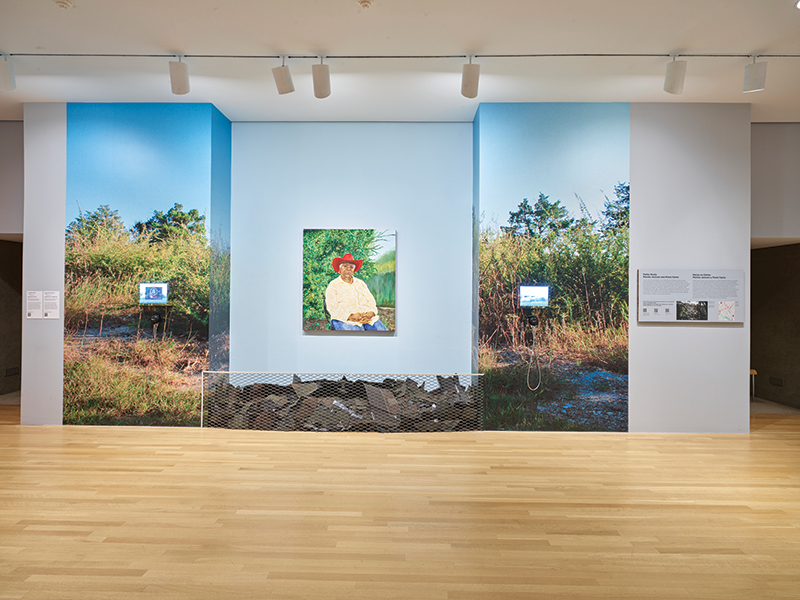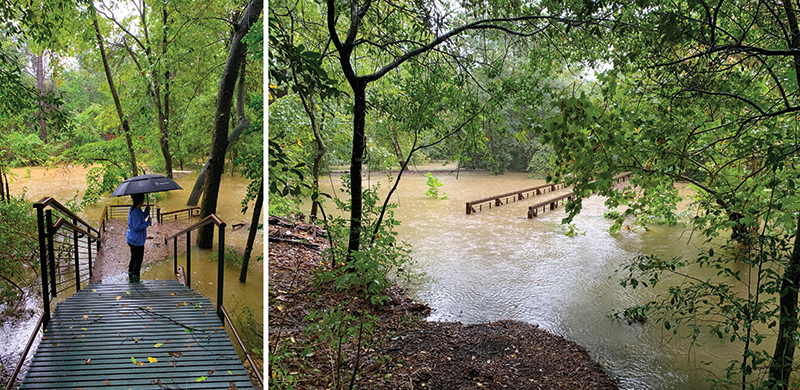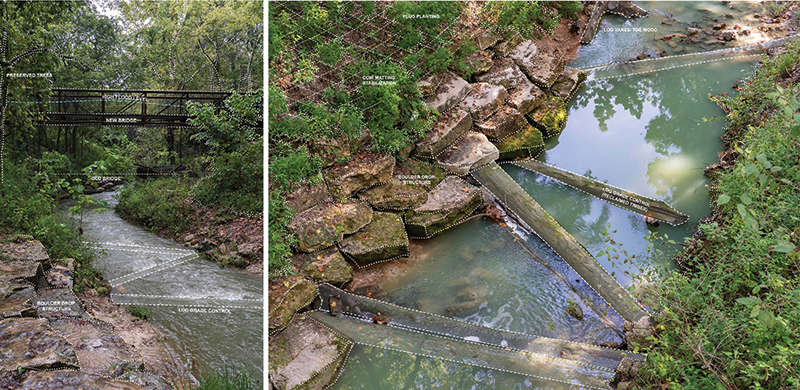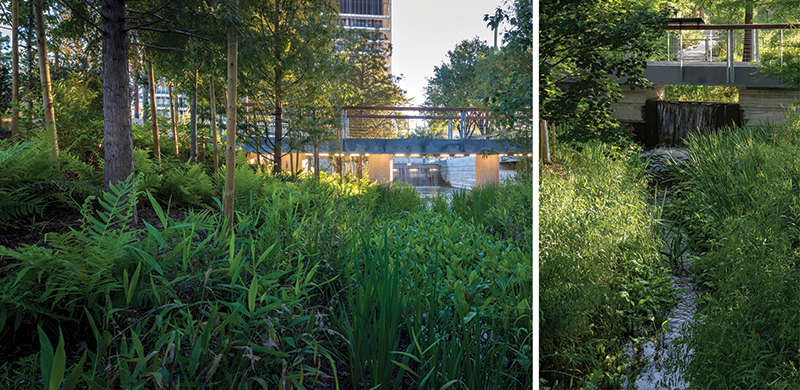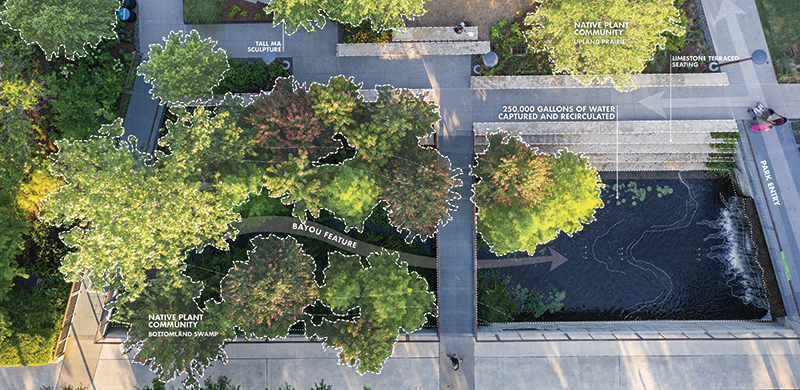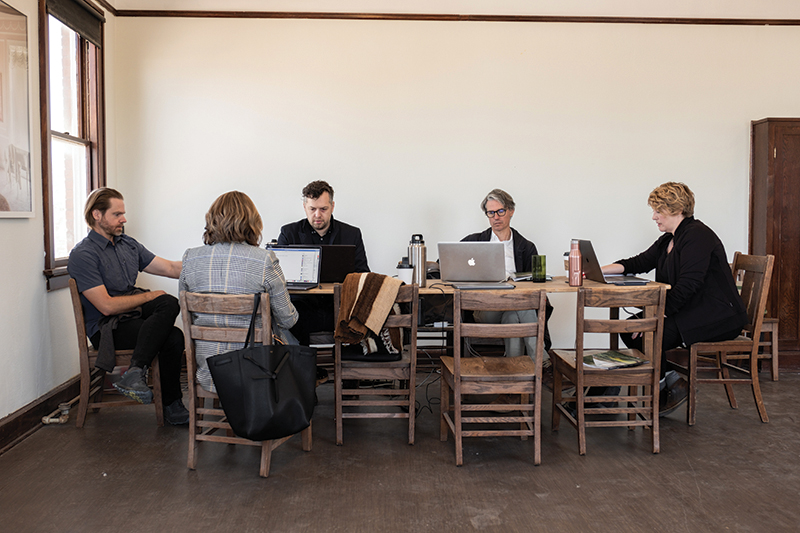
Rhapsody in Green
In addition to connecting city dwellers to nature, the urban forest improves public health while combating climate change.
Many municipalities, especially those along the Gulf Coast, are struggling to adapt their infrastructure to the realities of climate change. It seems that Houston receives a flash flood warning weekly during the rainier spring and summer months. This struggle underscores the need for urban development innovations that incorporate existing “grey” infrastructure with new, sustainable “blue-green” infrastructure: Blue infrastructure exists to successfully manage stormwater runoff, and green infrastructure improves air and water quality while integrating wildlife habitat and shade into the urban fabric. The blue and the green are equally important to the future of cities; therefore, they must work in concert and endure. Blue-green infrastructure is adaptable, unlike grey infrastructure: Pipes and cisterns are restricted by size and unable to accommodate larger storm events, which results in localized flooding. Low Impact Development, or LID, does not replace pipes; rather, it supplements undersized grey infrastructure with blue-green infrastructure.
Gulf Coast cities like Houston are improving stormwater management by retrofitting streets and green spaces to detain water. These blue facilities hold excess stormwater, which reduces localized flooding and gives municipal drainage systems more time to safely process and discharge storm runoff. These investments reduce repetitive property damage and decrease flood insurance claims. While the metrics associated with these vegetated areas primarily include reduced water quantities and improved water quality, they can provide a greater benefit to the built environment. This is especially true when trees dominate the urban landscape.
The urban forest is central to the critical connection between urban life, nature, climate change, and public health. Cities must begin to develop a holistic approach to blue-green infrastructure that not only focuses on water but also applies urban forestry principles to mitigate air pollution and the urban heat island effect. Cities must also ensure a lasting equitable relationship with their urban forest to keep residents well connected to nature. Several research efforts, such as a recent Houston-based study published by Plants People Planet that investigates a tree planting framework have identified correlations between underserved communities and a lack of tree canopy. Tree advocates understand that these communities record hotter temperatures, resulting in fewer outdoor recreational activities. Integrating trees into these communities will require capital as well as education to ensure new trees are maintained.
As cities in the southern United States continue to retrofit streetscapes and redevelop green spaces to effectively manage stormwater, they must develop an approach for planning and implementing a functional, prosperous urban forest utility system.
In an urban forest, both publicly and privately owned trees will contribute to the system. Equating urban forests to electrical utility systems, a forested park would serve as a substation, and canopy-covered parkways would serve as mainlines. An updated tree inventory and urban forestry plan will maintain species diversity, and new codes and policies will ensure that more trees receive protection.
The growth of southern cities places their existing, robust urban forests at risk. Aerial imagery indicates that the tree canopies of most southern U.S. cities are declining. More trees are dying or being removed than are being planted, and new trees cannot match the benefits provided by mature trees.
Urban soil issues that lead to tree stress, which in turn invites pests, are the most notorious causes of tree decline and death in cities. This etiology is also the most preventable, as it is directly related to human actions that cause soil contamination and compaction. New technologies, like Construction EcoService’s Stratavault system, mitigate soil compaction by elevating pavements over tree roots. In addition, as demand for profitable urban space increases, southern cities develop and expand without saving space for roots. And in the current development market, a parking space, for example, has more “value” than a tree. Compounding the problem, municipalities and developers often prematurely label older trees for removal due to liability concerns.
With so many threats facing the existing tree canopy of southern cities, replacement trees continually fail to reach maturity. According to the tree cultivation professionals at Select Trees in Athens, Georgia, a tree must grow for at least 50 years to reach a size capable of producing maximum ecological benefit. Unfortunately, the average length of survival of a new street tree is less than 10 years. The short life span means these trees do not grow large enough to effectively clean the air or provide enough shade to reduce urban temperatures. The older a tree becomes, the better it will absorb carbon from the atmosphere. Large, mature trees consume nearly 50 pounds of carbon dioxide and other greenhouse gases annually. These trees have more stored carbon within their biomass, and they provide shade that lowers the temperature of the surrounding area.
To the detriment of society and ecology, mature urban trees are an endangered species. Cities must ensure the long-term survival of their trees to capture much-needed public health and infrastructure benefits. To do this, landscape architects need to design urban forests; tree advocacy groups need to replant urban forests; and municipalities must implement tree protection legislation as well as urban forestry ordinances. Seldom does any group think of the urban forest as an extensive utility grid, nor do they consider tree maturation and its benefits when specifying trees for planting. They must. We must. When designing green infrastructure, landscape architects should calculate the immediate and anticipated benefits of trees and design spaces suitable for trees to grow to mature sizes. When planting green infrastructure, advocates should prepare a vision plan that builds the biodiversity and resilience of the entire urban forest.
Resilience is a critical success factor for the future of cities. In the Gulf South, cities that invest in blue-green infrastructure as a frontline defense against climate change will reap the benefits of resilience. The Greater New Orleans Urban Water Plan is a model example, using vegetation, soils, and natural processes as part of its comprehensive 50-year water management plan to “reduce risks from flooding and subsidence, improve water quality, and create other community benefits such as improved recreation, transportation, community gathering, neighborhood beautification, and economic development.”
Holistic urban forestry plans will be a key tool for planning and developing blue-green infrastructure. As green infrastructure becomes more commonplace within the urban fabric, the concept and image of the street tree needs to evolve in future forestry plans.
A holistic urban forestry plan recognizes the correlation between species diversity and tree resilience. According to best practices, a resilient urban forest should consist of no more than 10 percent of the same species, 20 percent of the same genera, and 30 percent of the same taxonomic family. Furthermore, foresters recommend that genera known to be susceptible to a certain pest or disease should make up less than 10 percent of an urban forest. Applying this ratio at a city scale takes vision and coordination, and it will safeguard the utility system by reducing the potential for high percentage losses in the tree canopy.
Cities such as Houston should also reimagine how trees look within a streetscape. Street trees are currently only grown well-spaced to maximize their canopies, but these large trees with shallow roots are most susceptible to damage and failure during (now frequent) high winds. Urban trees no longer need to look like giant lollipops. Street trees could resemble the taller, leaner tree clusters found in a typical forest. Trees are stronger and more beneficial in clusters than standing in solitude. When sited correctly, closely grouped trees can provide more shade, better wildlife habitat, and stronger resistance to wind.
The burden of identifying creative solutions for solving these dilemmas also falls to designers. Architects and landscape architects must work together to locate structures in areas that ensure the success of site trees. Landscape architects must specify the requisite tree species and planting locations to ensure maturity, and they must design by calculating and achieving maximum landscape performance benefits. The metrics that determine the performance of the existing and newly planted trees can be obtained by applying the allometric equations embedded within urban tree utilization, planning, and design tools and software. By understanding the metrics, a designer can then ascertain the potential benefits of plantings as well as how they will enhance the entire urban forest. Once landscape architects develop a better understanding of the relationships between tree species, tree size, tree counts, and the associated benefits of all three, cities can design true green infrastructure that includes a service-oriented tree network — an urban forest utility system.
Gaylan Williams is a landscape architect at Design Workshop in Houston. He is currently pursuing a Ph.D. in urban forestry from Southern University and A&M College in Baton Rouge. The original version of this essay appeared on planetizen.com on February 10.
Also from this issue

